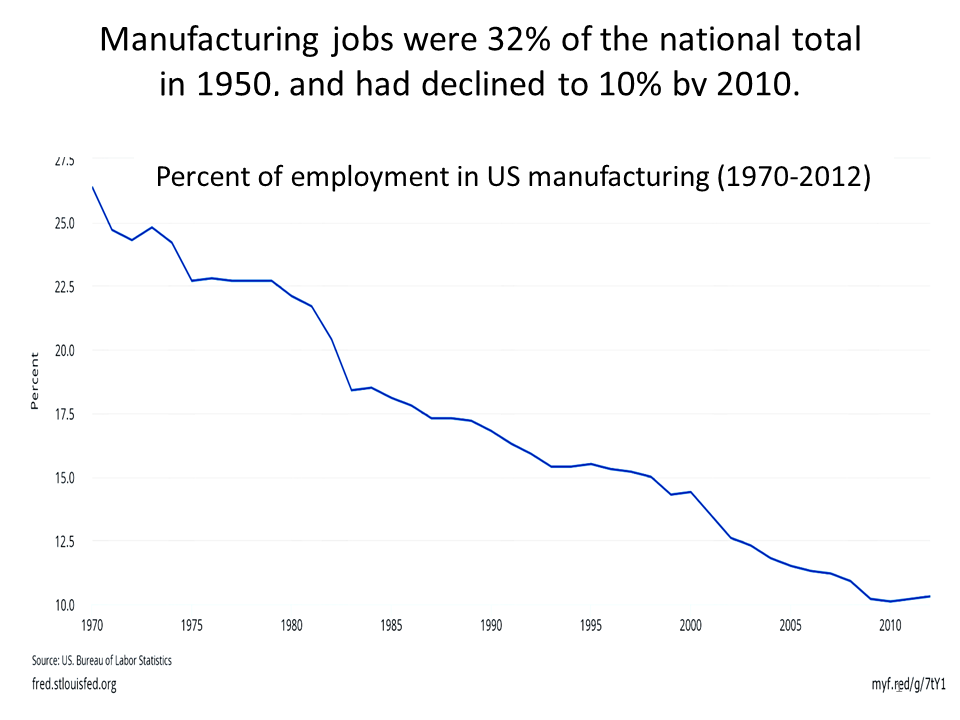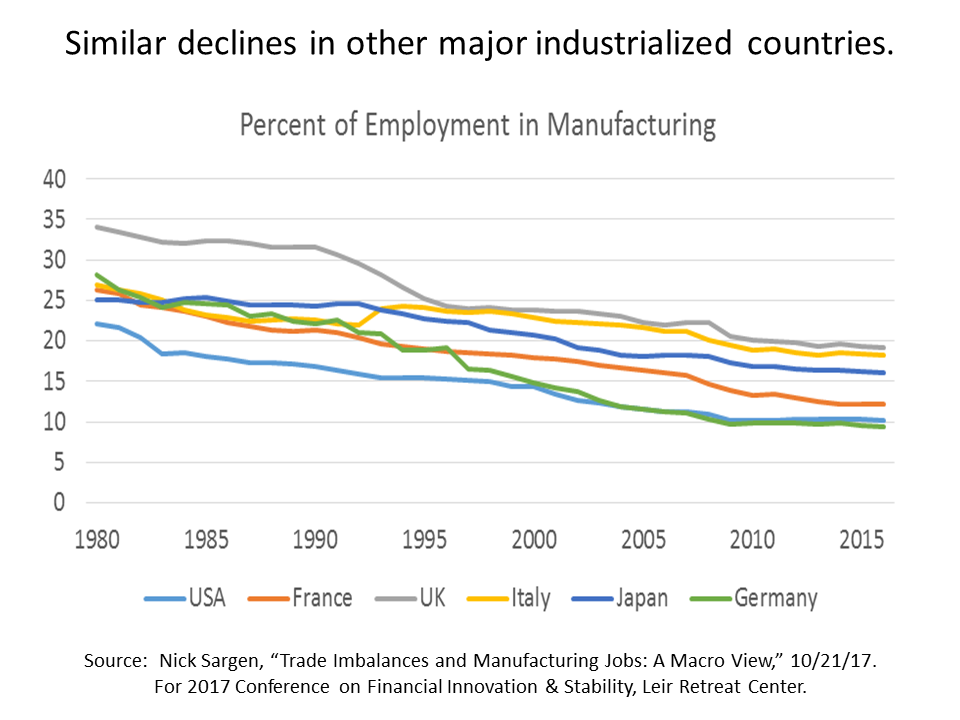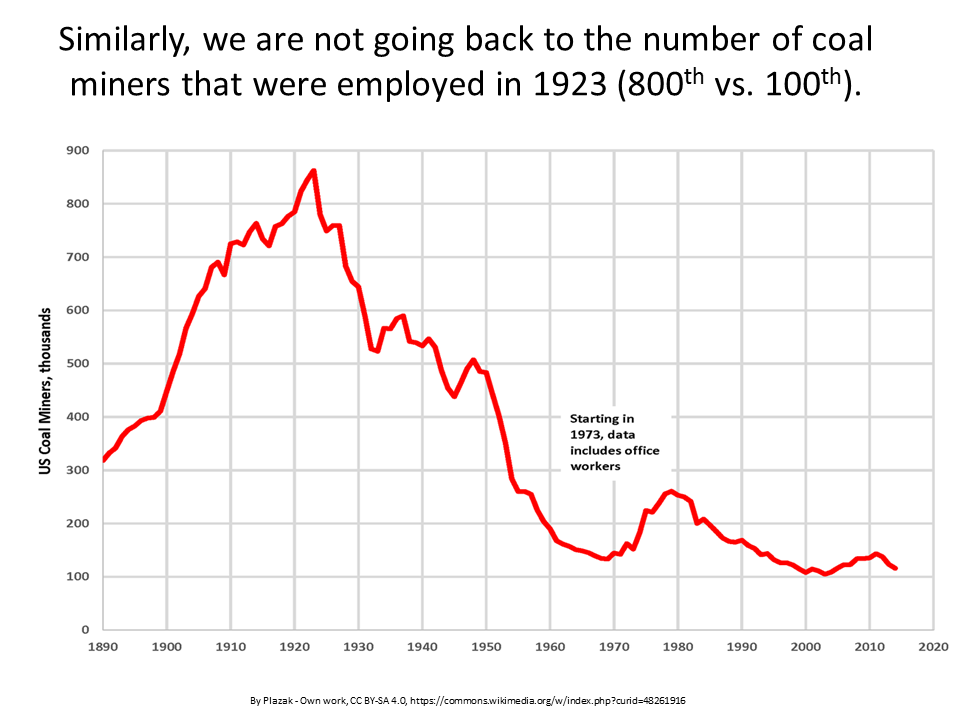Nov. 10, 2017 — What does international trade have to do with US jobs? Surely the US trade deficit in manufacturing has reduced employment? Not as much as you would think, on net. Especially with regard to overall employment, which in the long run is determined by the size of the labor force. But even if manufacturing jobs are considered more important than service jobs, trade policy has not been the main reason for their decline. Perhaps the raw statistics can be made more intuitively convincing if one makes comparisons with other sectors.
Consider long-term job loss in three sectors: Manufacturing, Coal, and Agriculture.
- Manufacturing employment has fallen steadily, from 32% as a share of total US employment in 1950, to 10% in 2010, as shown in Chart 1. (It recovered slightly thereafter.) But similar declines have occurred in other major industrialized countries (as shown in Chart 2), including those like Germany which runs a big trade surplus in manufacturing. Furthermore, US manufacturing output has continued to rise. That means productivity has gone up a lot. It takes fewer workers to make an auto than it did 65 years ago.
- By analogy, agricultural employment fell from 90% in 1790, to 2% today. Technological progress and rising productivity are the explanation. Not trade, which is a big “plus” for American farms.
- Coal mining jobs have fallen from 800,000 in 1923, to 100,000 now. (See Chart 3.) Again, a shift in mining techniques is the reason. Trade is, if anything, on the plus side again.
The loss in manufacturing jobs is analogous to the lost agricultural and coal jobs, in five important respects:
- The jobs are not coming back.
- In the long run, they have been offset by jobs gained elsewhere, particularly services.
- There have been long and painful adjustment costs for some individuals and communities, in all three sectors. Think of individual communities that have been left behind in the Great Lakes states for manufacturing, in the upper Plains for farming, and in Appalachia for coal.
- The primary cause of the job shift is not trade but technological progress and productivity growth. The globalization of the last 60 years has admittedly been a net minus for manufacturing (though not necessarily individual trade policies like NAFTA) and a net plus for other sectors. In all three cases, trade has a much smaller impact than technology.
- The list of good policies to deal with individual job loss and stagnating real wages and median family incomes is similar regardless of whether the cause lies in trade, technology, or other factors.



